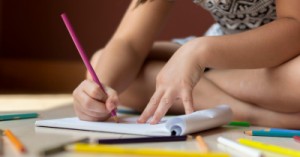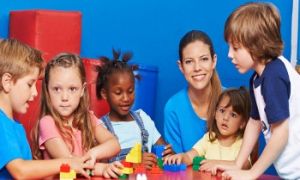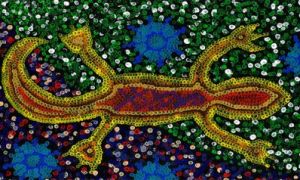A: A jotting observation is a concise and informal way to document significant events, behaviors, or interactions. These observations are typically brief, focusing on specific moments rather than a sequence of events. They provide a snapshot of a child's interests, development, or skills and can be recorded in various formats, such as notebooks or post-it notes.
For example, a jotting might describe how a child interacts with peers during playtime or how they respond to a new activity. These notes can later be expanded into more detailed records if needed. They're valued for being quick and efficient, offering insights into a child's growth and behavior.
How To Write One
Writing a jotting observation is straightforward and efficient. Here's a step-by-step guide to help you:
- Set the Scene: Begin with a brief description of the setting and context. For example, mention where the observation is taking place and the activity happening.
- Use Present Tense: Write in the present tense to make the observation feel immediate and vivid.
- Be Specific and Objective: Focus on what you see and hear without adding interpretations or assumptions. For instance, instead of saying "The child is happy," describe the behavior, like "The child is smiling and clapping hands."
- Include Key Details: Highlight significant actions, behaviors, or interactions. If possible, include direct quotes from the child or others involved.
- Keep It Brief: Jotting observations are meant to be concise, so aim for a few sentences or a short paragraph.
- Summarize: End with a quick summary or note about the observation's relevance, such as how it reflects the child's development or interests.
Sample
Here's an example of a jotting observation:
Date: April 20, 2025
Child's Name: Anya (3 years old)
Setting: Outdoor playground
Observation:
Anya is sitting in the sandbox, using a small plastic shovel to scoop sand into a bucket. She carefully fills the bucket, patting the sand down with her hands. Another child approaches and asks to use the shovel. Anya looks at the child, pauses, and then hands over the shovel, saying, "Here you go." She then picks up a nearby rake and begins using it to smooth the sand.
Summary:
This observation highlights Anya's ability to share and adapt to changes in her play environment. It also demonstrates her fine motor skills and social interaction with peers.
Interpreting Observations
Interpreting a jotting observation involves analyzing the recorded behavior to understand its significance in the context of a child's development, interests, or skills. Here's how you can approach it:
1. Identify Developmental Milestones/Outcomes: Look for behaviors that align with expected developmental stages. For example, in the observation of Anya, her ability to share and adapt shows social and emotional growth.
2. Understand Interests: Note any preferences or interests the child displays. Anya's focus on using tools like a shovel and rake suggests an interest in constructive play.
3. Assess Skills: Evaluate the skills demonstrated, such as fine motor skills, problem-solving, or communication. Anya's careful handling of the shovel and her verbal interaction with a peer highlight her fine motor and social skills.
4. Contextualize Behavior: Consider the environment and circumstances. Anya's willingness to share might be influenced by the presence of an adult or her familiarity with the other child.
5. Plan Next Steps: Use the interpretation to guide future activities or interventions. For instance, you might introduce more collaborative play opportunities to further develop Anya's social skills.
Further Reading
Jotting Observations In Childcare
Different Types Of Observation Methods







 Here is the list of the EYLF Learning Outcomes that you can use as a guide or reference for your documentation and planning. The EYLF
Here is the list of the EYLF Learning Outcomes that you can use as a guide or reference for your documentation and planning. The EYLF The EYLF is a guide which consists of Principles, Practices and 5 main Learning Outcomes along with each of their sub outcomes, based on identity,
The EYLF is a guide which consists of Principles, Practices and 5 main Learning Outcomes along with each of their sub outcomes, based on identity, This is a guide on How to Write a Learning Story. It provides information on What Is A Learning Story, Writing A Learning Story, Sample
This is a guide on How to Write a Learning Story. It provides information on What Is A Learning Story, Writing A Learning Story, Sample One of the most important types of documentation methods that educators needs to be familiar with are “observations”. Observations are crucial for all early childhood
One of the most important types of documentation methods that educators needs to be familiar with are “observations”. Observations are crucial for all early childhood To support children achieve learning outcomes from the EYLF Framework, the following list gives educators examples of how to promote children's learning in each individual
To support children achieve learning outcomes from the EYLF Framework, the following list gives educators examples of how to promote children's learning in each individual Reflective practice is learning from everyday situations and issues and concerns that arise which form part of our daily routine while working in an early
Reflective practice is learning from everyday situations and issues and concerns that arise which form part of our daily routine while working in an early Within Australia, Programming and Planning is reflected and supported by the Early Years Learning Framework. Educators within early childhood settings, use the EYLF to guide
Within Australia, Programming and Planning is reflected and supported by the Early Years Learning Framework. Educators within early childhood settings, use the EYLF to guide When observing children, it's important that we use a range of different observation methods from running records, learning stories to photographs and work samples. Using
When observing children, it's important that we use a range of different observation methods from running records, learning stories to photographs and work samples. Using This is a guide for educators on what to observe under each sub learning outcome from the EYLF Framework, when a child is engaged in
This is a guide for educators on what to observe under each sub learning outcome from the EYLF Framework, when a child is engaged in The Early Years Learning Framework describes the curriculum as “all the interactions, experiences, activities, routines and events, planned and unplanned, that occur in an environment
The Early Years Learning Framework describes the curriculum as “all the interactions, experiences, activities, routines and events, planned and unplanned, that occur in an environment


